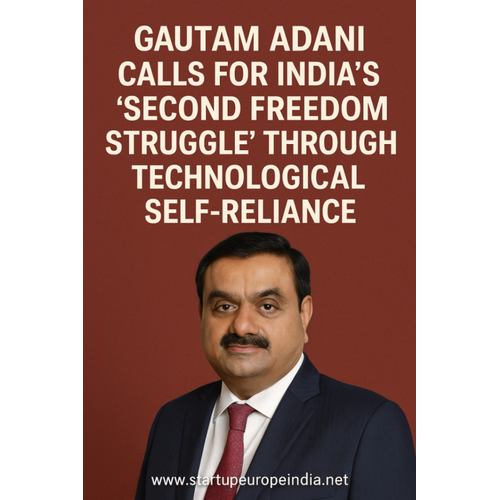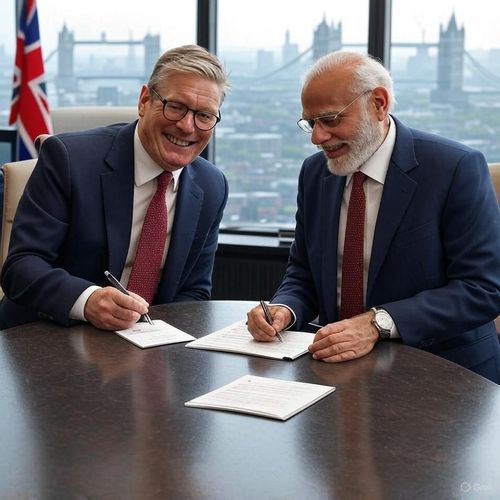India's Ambitious Leap: Striving to Become an AI Superpower by 2030 - CNA Insider
India is rapidly embracing artificial intelligence (AI), aiming to become a global AI powerhouse by 2030. Despite currently playing catch-up to frontrunners like the US and China in AI investments and compute infrastructure, India is not merely joining the race; it seeks to leverage AI to address its unique national challenges at scale, with a core focus on inclusivity and reducing disparity.CNA Insider's take-on India's AI standing and ambitionIndia is rapidly embracing artificial intelligence (AI), aiming to become a global AI powerhouse by 2030. Despite currently playing catch-up to frontrunners like the US and China in AI investments and compute infrastructure, India is not merely joining the race; it seeks to leverage AI to address its unique national challenges at scale, with a core focus on inclusivity and reducing disparity.Understanding Artificial Intelligence At its heart, AI is designed to mimic human intelligence, learning and performing cognitive tasks. Unlike traditional programming where humans define rules, AI systems learn rules from vast datasets, identifying patterns in images, text, or speech to make predictions or decisions. The promise of AI is its ability to work with humans almost as a peer, transforming societies, revolutionising industries, and reshaping economies.A National Vision: AI for India 2030 India launched the "AI for India 2030" initiative in January 2023, followed by the government's approval of US$1.25 billion in investments for AI projects in March 2024 as part of the "India AI Mission". This mission, spearheaded by veteran civil servant Abishek Singh, aims to drive nationwide development and adoption of AI. A central tenet is to enable AI "for Indians by Indians and of Indians," ensuring it benefits all sectors of society and establishes India as a global AI leader. Estimates suggest AI could add half a trillion dollars to India's economy by 2035.India's Key Advantages in the AI Race India possesses several strengths that position it favourably in the AI landscape:Remarkable Digital Adoption: With a population of 1.4 billion, India has achieved impressive digital penetration. The India Stack, a full-scale public digital infrastructure, provides a suite of open and accessible digital tools. Examples include Aadhaar, a digital identity application with 99% population enrolment, and UPI, a unified instant payment system used by 500 million people. India plans to integrate AI applications into this stack, exemplified by Project Bhashini, which supports over 300 AI models for all 22 Indian languages, enabling voice-enabled services.Vast Talent Pool: India boasts the second-largest number of AI specialists globally, after the US, according to Boston Consulting Group. A significant 20% of AI and machine learning engineers worldwide are from India, showcasing a very large talent pool.Current Standing and Challenges India ranks fourth in Stanford's AI vibrancy index, a measure of a country's AI activity, development, and impact. However, it faces notable challenges:Investment Gap: Private sector investment in AI in India between 2013 and 2024 totalled approximately US$11 billion, significantly less than America's US$471 billion and China's US$119 billion. India's R&D intensity is also low, at just 0.65% of GDP, compared to 3.5% in the US and over 2.6% in China.Lack of Foundational AI Models: India currently relies on foundational models (large general-purpose machine learning models like GPT-4) built by other nations. Developing its own foundational models is crucial for strategic applications, including defence, to ensure data source transparency and avoid geopolitical risks. However, building these models is expensive, with GPT-4 estimated to have cost at least US$100 million.Cost and Scale: While some Indian companies like Strider Robotics are developing cutting-edge techniques for training robots, they acknowledge the need to catch up with global leaders. Agritech firms, despite raising funds, require more capital to expand their technologies nationwide.Linguistic Diversity: India's 22 official languages pose a challenge for training machine learning models at scale.Addressing the Roadblocks: The Path Forward India is actively working to overcome these challenges. The government allocated US$520 million in its recent budget for AI-related projects and has called for proposals to build India's own foundational models, receiving 67 proposals within two weeks with a plan to build six large-scale models by year-end. India draws encouragement from China's DeepSeek, which demonstrated that high-performance large language models can be built with significantly fewer resources, offering a model for India's cost-conscious approach. Experts are confident that India will be among the top-tier in AI technology within two to three years.Transformative Applications of AI Across Sectors AI is already making a tangible impact in India:Agriculture: With half of India's population dependent on agriculture, AI platforms like Fazl help farmers monitor soil, plant, and microclimate conditions, providing predictions and analysis to boost yields by 20-30%. AI agents can provide farmers with information on crop diseases, patterns, prices, and advisories, improving efficiency and income.Public Safety and Governance: AI is used to detect tuberculosis from X-ray images in rural areas lacking radiologists. At mass gatherings like the Mahakumbh Mela, machine learning monitors human traffic to prevent stampedes, and AI-assisted language translation apps help pilgrims find lost loved ones. Drones with AI-enabled autonomous navigation are being developed for emergency response, transporting blood samples or other cargo to remote locations.Industry and Hazardous Work: Robots are being developed for dangerous and difficult tasks in agriculture, mining, and construction, where working conditions are often poor. Vision AI is preferred over laser-based technologies like LiDAR for outdoor environments with dust, snow, or rain, making robots more adaptable.Everyday Life: An AI-powered app allowed Pankuri Gupta to transform into her AI avatar within seconds, showcasing the technology's application in influencer marketing and learning platforms.Concerns and Mitigation: Jobs and Misinformation While the potential of AI is immense, it also raises significant concerns:Job Displacement: Repetitive digital jobs, including routine coding, customer support, retail, and finance, are highly vulnerable to automation. Bangalore, India's Silicon Valley, saw over 50,000 IT job losses in 2024 due to companies shifting to AI operations. A survey indicated that six in ten Indian workers are worried about potential job loss. The World Economic Forum estimates AI could replace 92 million workers globally by 2030.Upskilling and Reskilling: To counter job displacement, there is a strong emphasis on upskilling and reskilling the workforce. AI curriculum has been introduced at school (Class 10th and 12th) and engineering levels. Being "AI native" is increasingly valuable, and India faces a potential shortfall of 1 million AI professionals by 2027.Misinformation and Deepfakes: AI poses a severe risk of misinformation, especially through deepfake videos and audio, which can be used to radicalise people, influence voter behaviour, or commit cybercrimes. The India AI strategy aims to address this through regulation focusing on "user harm" and building guardrails to control the technology.The Road Ahead India envisions AI as a powerful tool, not a threat, capable of doing what humans want to achieve more efficiently. With its strong talent pool, ambitious government initiatives, and a unique approach to inclusive AI development, India is well-poised to take its rightful place among the top AI-developing countries in the coming years. The journey involves overcoming challenges like cost, linguistic diversity, and large-scale skilling, but the long-term outlook remains optimistic.---Startup Europe India Network (SEINET) is an exclusive, invite-only platform connecting science and technology scale-ups, industry leaders, and investors from Europe and India to accelerate cross-border growth through sales, partnerships, and M&A. www.startupeuropeindia.net
Mon, Aug 18, 2025
































